What does aphid look like on currants and how to get rid of it?
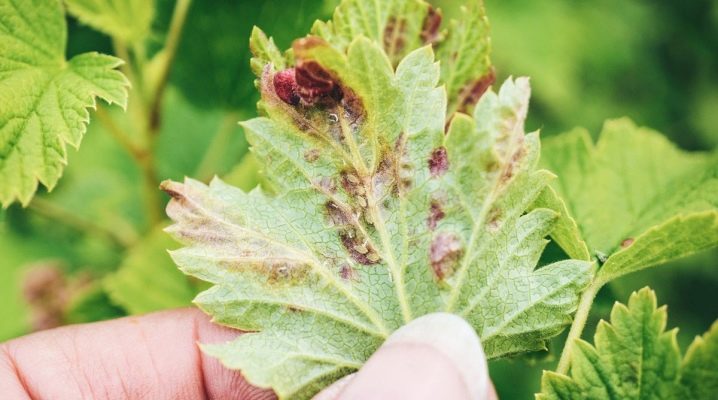
Aphids are considered one of the most common plant pests. Small bugs spread very quickly throughout the site, capturing new territories. Therefore, having noticed these pests in your garden, you need to get rid of them immediately.

Description of species
There are many different types of aphids that attack the plants in the garden and vegetable garden. The following varieties are the most dangerous for currants.
- Red-gall... There are two types of gall aphid. Wingless is distinguished by its larger size. The color of such bugs is green. Winged pests have a translucent yellow body and almost invisible wings. The leaves of the bushes on which such aphids live are covered with red bulky spots.
- Bird cherry... This type of aphid has a darker color. Such aphids are one of the main vectors of diseases. Leaves affected by pests curl up very quickly and then dry out.
- Beetroot... This aphid is also often referred to as a legume. It is dangerous not only for red and black currants, but also for root crops, as well as legumes. The body of the aphid is dark in color. Affected leaves turn yellow and gradually curl.
- Blackberry... This pest can be recognized by its yellow-green body color. The insect feeds on plant buds. That is why the affected bushes bear fruit very poorly. You can understand that the plant was affected by the yellowing buds and drying out tips of the branches. You need to fight such pests very quickly, otherwise the aphids will move to grapes, raspberries or apple trees.
- Currant... It is the green leaf aphid that most often attacks currant bushes. She usually does this in June or July. A plant affected by currant aphids looks bad. The foliage curls on it. The bush slows down and begins to dry out.
- Peach... This type of aphid is very tiny in size. She has a very light green color. Such pests are considered the most dangerous for currants, because they can infect the bushes with a large number of infections.
In general, each of these varieties of aphids is dangerous in its own way for young and mature currants. Therefore, you need to get rid of all the pests seen on the bushes.
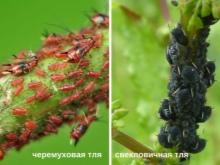
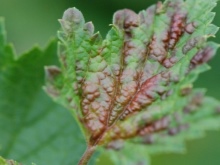
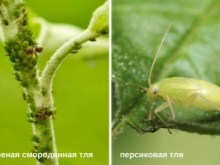
What is the danger of a pest?
Aphids are a small insect that feeds on plant sap... Such an effect on flora representatives leads to the fact that they are significantly weakened. Because of this, the bushes become more susceptible to disease. Weak currants with yellowed foliage and thin shoots can be struck by any disease.
Plants attacked by aphids also bear fruit much worse. Weakened bushes may not survive the winter.
An important role is also played by the speed with which aphids spread, because these pests can very quickly capture all the bushes on the site. Therefore, if you miss the moment, not one small bush will have to be treated, but the entire infected area.
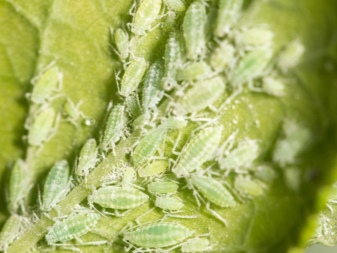
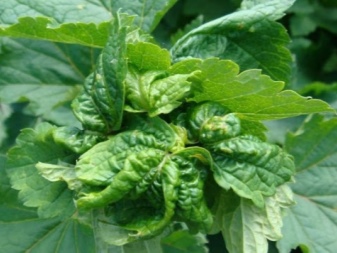
How can the bushes be processed?
Fortunately, there are many different ways to control aphids. It is possible to destroy these pests both by chemical or biological means, and by folk methods.
Chemicals
The most effective way to control small pests is the use of chemicals. It is most convenient to poison aphids with the following compositions.
- "Jaguar"... This remedy works very quickly. For the treatment of the site, the product is diluted in a ratio of 1 to 10. It is best to use warm water for this purpose. The effect of using this solution lasts for several weeks. After that, the procedure can be repeated.
- Biotlin. This product is also highly efficient. Aphids die within a couple of hours after the treatment of the bushes with a solution. The effect after such a procedure lasts about 2-3 weeks.
- "Karbofos"... This drug is also quite effective. It is not too toxic, so it can be used in the garden. The composition acts quickly. Using it, you can get rid of aphids in your area in a couple of weeks.
Modern chemicals must be used carefully. It is recommended to do this in dry weather. It is important to protect the respiratory tract and skin by wearing goggles, a respirator, and gloves before handling.
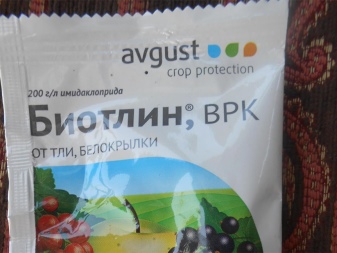
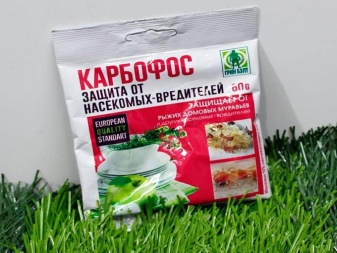
Biological agents
Biological agents also help in the fight against aphids. The following drugs have proven themselves well.
- Fitoverm. This medication is sold in small ampoules. He does not act immediately. The result will be noticeable 5-6 days after treatment. It is worth remembering that this drug should not be used during the flowering period. This is usually done after it ends. Berries from a bush processed in summer can be eaten only 5-6 days after the procedure.
- "Fufanon". This composition is also considered to be very effective. It is allowed to use it only two weeks after feeding the bushes with any fertilizers. The solution is used for treatment either in the early morning or late evening. To consolidate the result, the site will need to be re-treated with this drug after a week.
- "Acrophyte". This drug can be used to save bushes from massive aphid attacks. The composition is sold in small bottles. It acts instantly. Immediately after treatment, the pests are paralyzed. Over the next few days, they die altogether. This product is not rinsed off, so you can safely use it to treat areas in any weather. If the currant bushes are very badly affected, they can be re-treated with the solution after two weeks. It should be remembered that the prepared composition is not stored for a long time. Therefore, each time the solution must be prepared anew.
Biologics are less dangerous to humans than chemicals. Therefore, it is more profitable to use them in the summer.
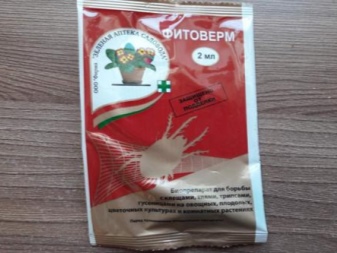
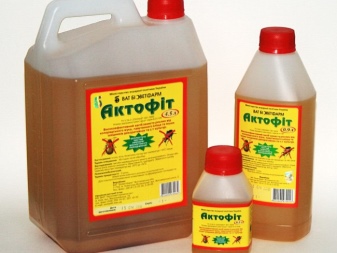
Folk methods of struggle
However, most gardeners prefer to process plants with folk remedies. The choice of solutions that can be prepared from available tools is quite large.
- Soap solution... To prepare such a composition, it is best to use tar or laundry soap. It must be grated on a coarse grater. Then 2 tablespoons of soap must be diluted in 100 ml of water. Then everything should be mixed well and poured into a spray bottle. The resulting composition can be applied immediately. Soapy solution is good because it stays on branches and leaves for a long time. Some gardeners add a little soda to a container of soapy water. A tablespoon of regular baking soda is enough for 1 liter of warm water. The mixture is thoroughly mixed. The powder should dissolve completely. After that, add a little soap solution to the container.
The finished product can be used to treat infected bushes immediately after cooking.
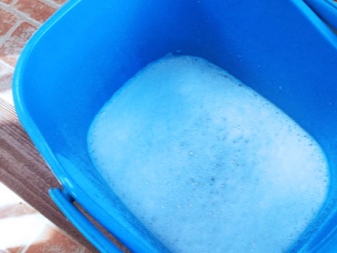

- Hydrogen peroxide... You can buy this shrub treatment at any pharmacy. A solution based on it is very simple to prepare. In ten liters of pure water, dilute 50 ml of peroxide and the same amount of alcohol. The resulting composition is poured into a sprinkler and used to process currant bushes. To consolidate the result, the spraying procedure must be repeated several more times. The plant should be processed no more than once a week.
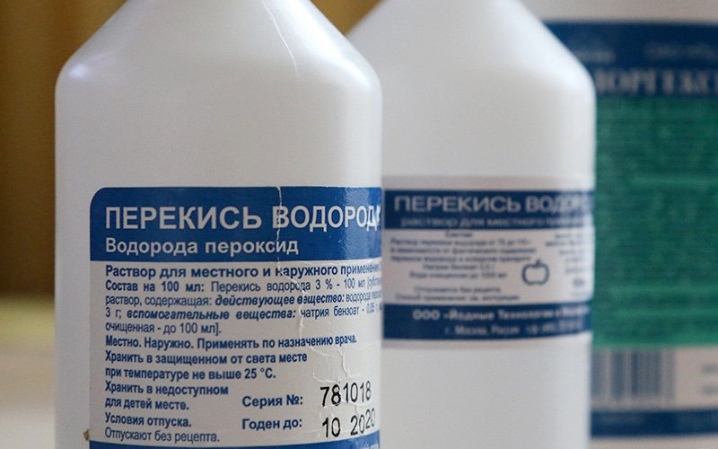
- Tobacco... Tobacco dust or tobacco leaves also help to treat infected bushes.A solution based on them is loved because it poses no danger either to currants or to bees that help in pollination of the site. For its preparation, use 100 grams of dry product or the same amount of fresh foliage. All this is poured with boiling water. The product is insisted overnight, and in the morning it is used to treat the area. With this infusion, the bushes can be sprinkled even during the flowering of currants. To consolidate the result, the composition is used every 10-14 days.
During the ripening period of berries, these procedures must be stopped. You can pick currant fruits only a week after the last treatment of the garden.
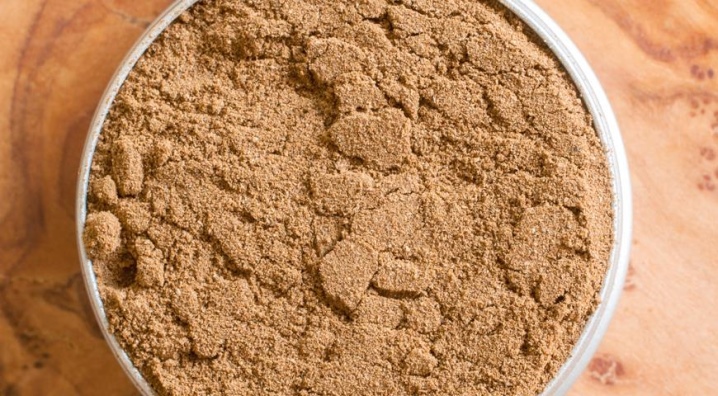
- Marigold... The composition, prepared on the basis of marigolds, is perfect for fighting aphids. It is prepared very simply. Marigolds must be crushed and poured with ten liters of warm water. The product is infused for three days. After that, it must be filtered through cheesecloth and only then used in order to spray the area.
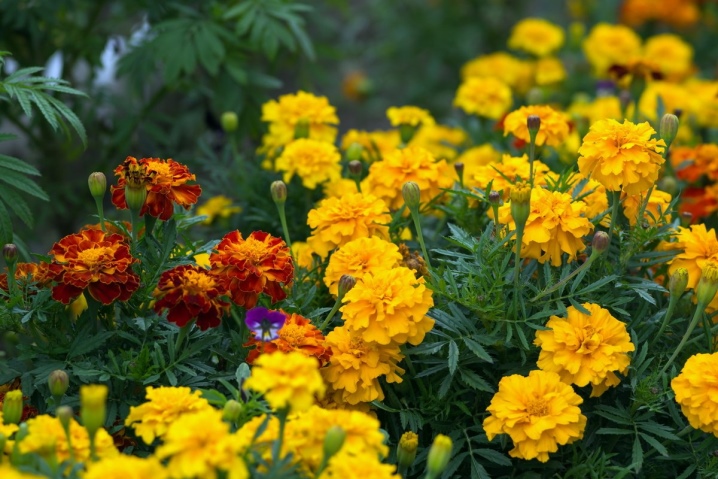
- Dry mustard. To prepare this solution, dry mustard powder is used. A tablespoon of the product is diluted in one liter of water. After that, the composition is infused for two days. Before use, the infusion is diluted with water in a ratio of 1 to 1. If there are too many aphids on the green bushes, twice as much powder is taken to prepare the solution.
The finished insecticide helps to remove not only aphids from the site, but also the leaf roll.
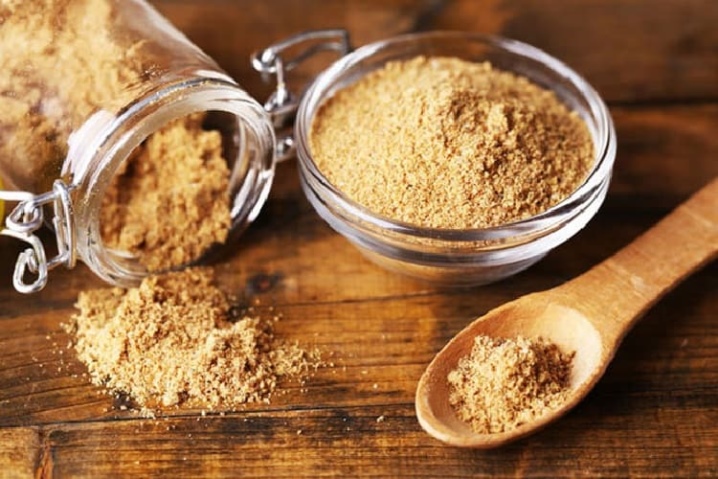
- Fresh needles. It is best to use pine needles for processing the site. The product must be fresh. A kilogram of needles must be poured with five liters of water. Insist on it for a week. If the area is heavily infested with aphids, do not dilute the product before use.
In the event that it is used for prophylaxis, the infusion must be diluted in a ratio of 1 to 5.
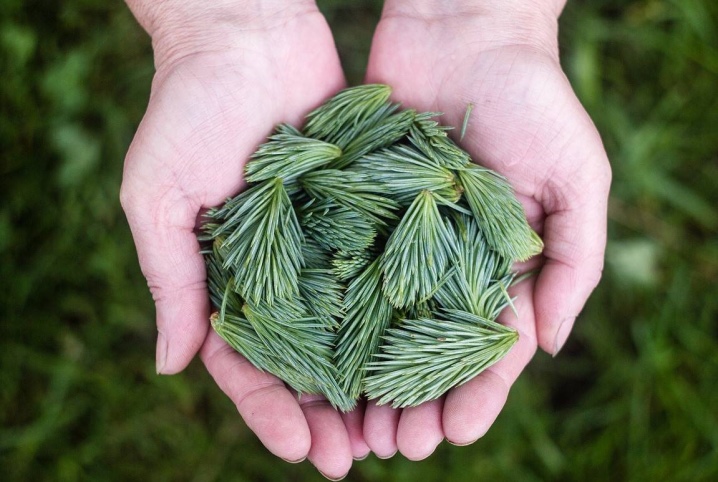
- Onion peel. You can protect the area from aphids without the use of chemicals using dry onion peels. You can start harvesting it in advance. To prepare the solution, use 100 grams of husk and 5 liters of boiling water. The composition is infused under the lid for several hours. Immediately after that, it can be used to treat the site. The product helps to fight gooseberry or gall aphids.
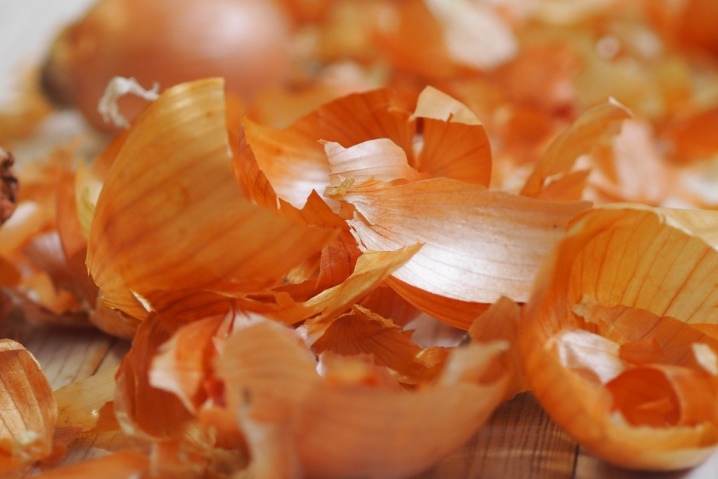
- Solanaceous tops. You can destroy aphids using an infusion of tomato or potato tops. The composition also helps to remove ticks and moths from the site. For its preparation, 4-6 kilograms of tops are poured with 10 liters of water, boiled for half an hour. After that, it is cooled. A small amount of soap is introduced into the finished solution. It is diluted 1 to 5 before use.
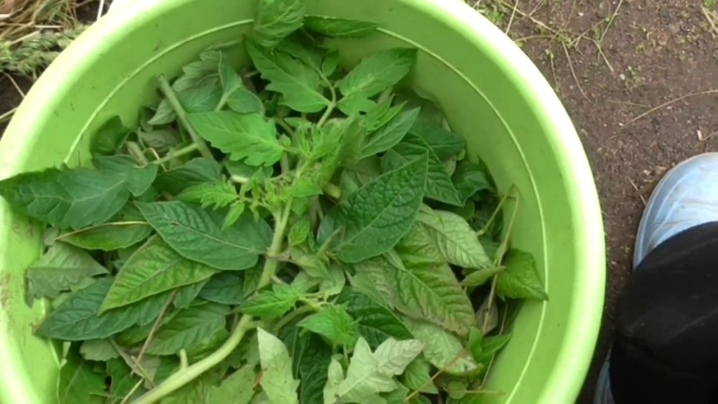
- Ash... This product is used not only to feed plants in the garden or vegetable garden, but also to protect their plants from pests. An ash-based solution is prepared rather quickly. For its preparation, 500 grams of fresh wormwood, 250 grams of pure wood ash and a small amount of laundry soap are used. All these products are poured with 10 liters of warm water. Means for processing the site are insisted for 5-6 hours. After that, it is filtered.
Pure infusion can be used immediately for spraying bushes.
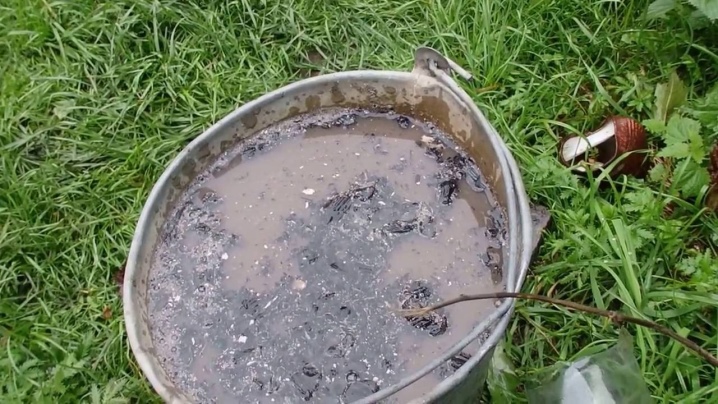
- Iodine... A solution based on iodine, like a concentrated ash infusion, serves both as a means for combating aphids and as a fertilizer. For its preparation, a liter of milk is diluted in ten liters of heated water. Then add a teaspoon of iodine there. This product is as effective as a soap solution. Milk fat stays on foliage and shoots for a long time, so plants are well protected from pests.
If desired, milk can be replaced with whey. The product helps in the fight against all types of aphids.
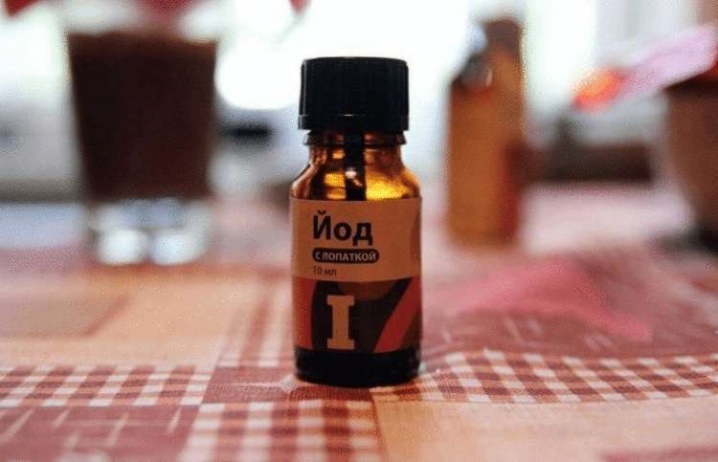
- Citrus... The sharp aroma of citrus actively repels pests. For aphids, it is best to use lemon and orange essential oils. Dilute 15–20 drops of aromatic oil in 500 ml of water. To make this composition work more efficiently, add 100 mg of cream to the container. The mixture is thoroughly mixed and used to spray the bushes.It is best to process the site several times. This should be done with a break of 10 days. It will take about a month to completely remove aphids.
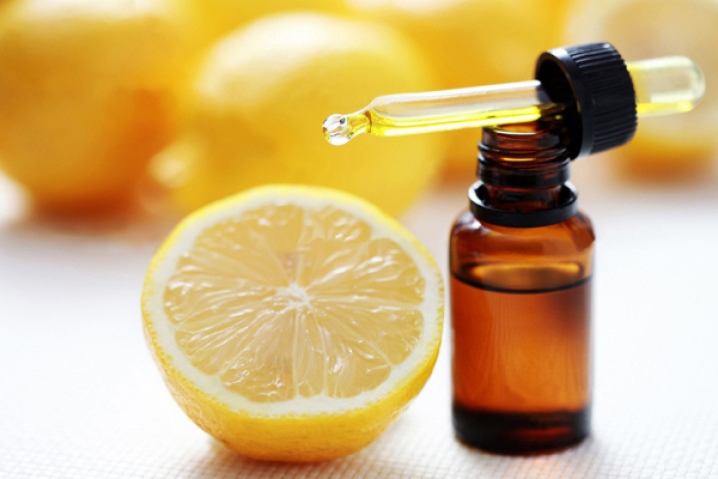
- Celandine... This weed is quite common. It can be found on riverbanks or along roads. You can recognize this plant by its bright yellow flowers. Celandine is an excellent insecticide. To prepare a solution based on it, 4 kilograms of greens must be finely chopped and filled with 10 liters of water. A bucket with this composition should be left for several hours. During this time, the liquid will change its color to brown. The resulting infusion must be watered abundantly.
Gloves must be used when handling this product.

- Vinegar... Apple cider vinegar can be used to treat currants in late spring or summer. A spoonful of fragrant liquid is diluted in one liter of water. The resulting composition is used to treat bushes immediately.
Aphids do not tolerate a product with such a strong aroma. Therefore, she immediately leaves the bushes.
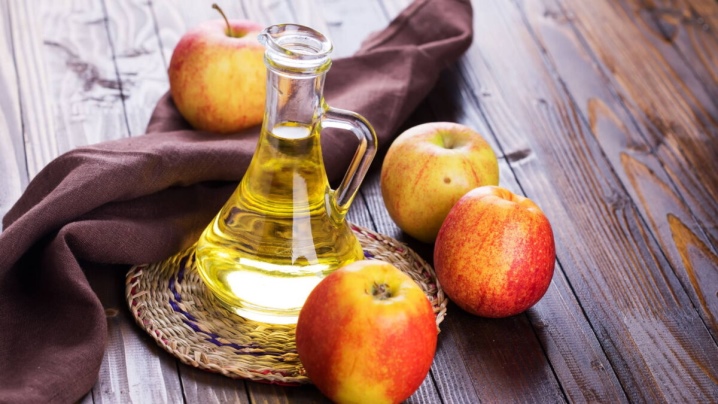
- Garlic... Garlic infusion is used in the first half of summer. To prepare it, 400 grams of the product must be finely chopped and filled with 10 liters of water. After that, the product must be sent to a dark place for four days. The finished product must be filtered and used to process currants.
When using these products, special attention should be paid to the processing of the inside of the sheets, because it is there that a large number of pests most often live.
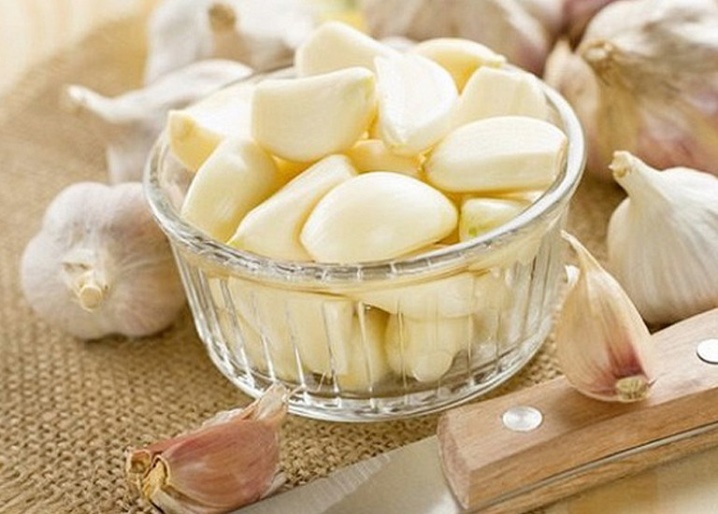
Plant repellents
You can protect your currants from pests by planting repellent plants in the garden. The proximity of bushes with tomatoes or potatoes is excellent for the condition of currants. In addition, flowers with a very strong smell can be planted nearby. It can be marigolds, lavender or calendula.
It is useful to plant aromatic herbs on the site. It is best to use sage, coriander or mint for this purpose.
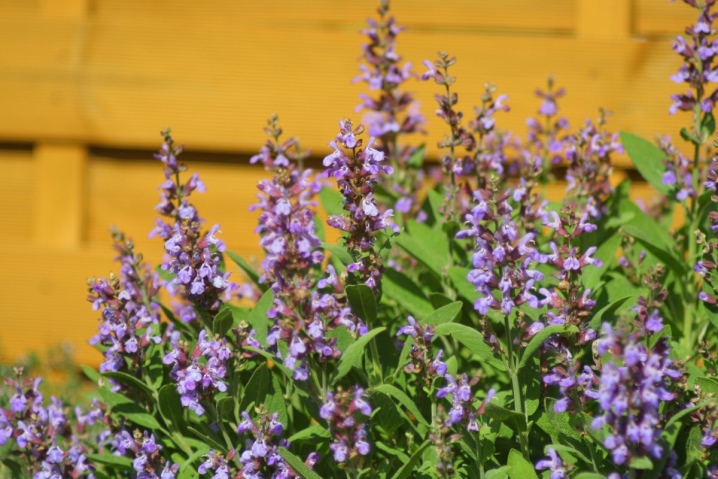
Natural enemies
Natural enemies of pests can also help protect the site from insects. Aphids feed on hoverflies, hunter bugs and ladybugs. To attract them to your site, wild carrots, lobularia and echinacea are planted next to young currants.
Birds such as sparrows, tits and goldfinches are also dangerous for aphids. They can be attracted to your site by placing birdhouses and small feeders there.
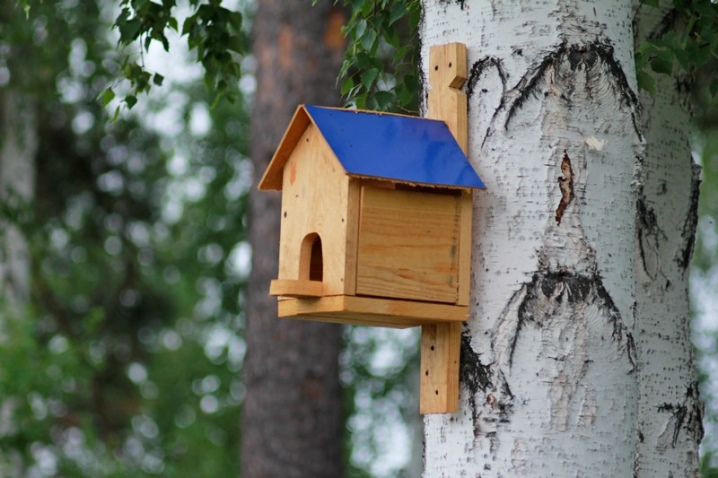
Prevention measures
Help in pest control and preventive measures.
- Regular site inspection... Currant bushes must be constantly examined. If traces of aphids' activity appear on the leaves, the currants already need protection.
- Timely feeding... For a plant to be healthy and strong enough, it needs to be fertilized regularly. For this, it is best to use a low nitrogen feed.
- Ant fighting... The presence of ants on the site also contributes to the rapid spread of aphids. Therefore, you also need to get rid of them.
- Pruning branches. In spring, currant bushes must be cut off, removing all unnecessary branches. This procedure should be carried out in early spring, even before the buds swell. Will help protect plants and spray the bushes with boiling water. Hot water will destroy the eggs.
If you properly care for the currant bushes and fight aphids in a timely manner, the plants will remain healthy, and the yield will be high.
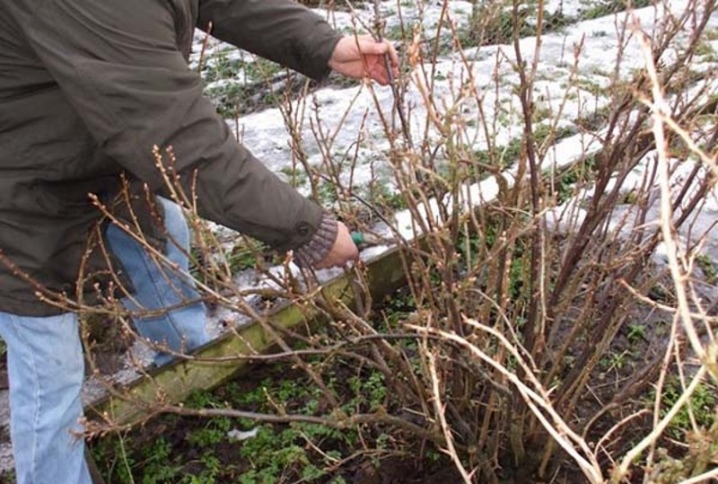













The comment was sent successfully.